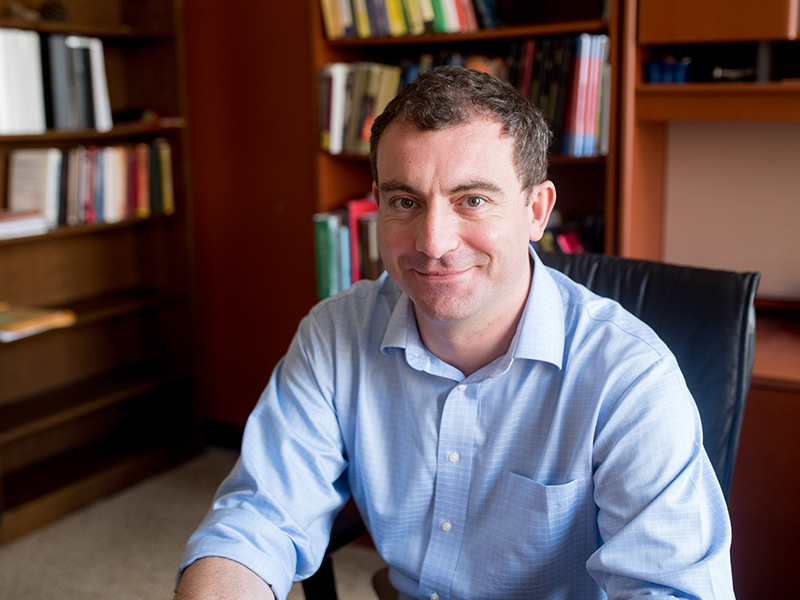With DOE Funding, Researchers Aim to Make Chemical Plants More Energy-Efficient
Researchers in the Cockrell School of Engineering recently received $360,000 from the Office of Electricity Delivery and Energy Reliability and the National Energy Technology Laboratory within the U.S. Department of Energy.

Michael Baldea, assistant professor in the Cockrell School of Engineering’s McKetta Department of Chemical Engineering
The project, “Models and Strategies for Optimal Demand Side Management in the Chemical Industries,” is led by chemical engineering assistant professor Michael Baldea in collaboration with electrical engineering professor Ross Baldick.
“This research will enable many types of chemical plants to operate in a way that reduces strain on the grid during peak times,” Baldea said. “The project will enhance grid operations by optimizing the production patterns of electricity-intensive chemical processes. Such processes can overproduce at off-peak times and reduce their production during peak grid demand hours, during which time chemical product customers can be supplied with material produced in the off-peak period. Think of it as a way to store energy in the form of marketable chemicals.”
The project will focus on chemical and petrochemical facilities in the Gulf Coast region of the United States and on the interaction with the power system operated by the Electric Reliability Council of Texas.
“We’ll review plant operating data and create a modeling framework that will enable the safe and extensive utilization of demand response potential of chemical processes,” explained Baldea. “Concurrently, we’ll examine ways to enhance production scheduling, focusing on real-time execution, to optimize demand response.”
Demand response refers to ways residential, commercial and industrial consumers, such as chemical plants, can reduce their electricity usage at certain times of the day, specifically during peak hours, when grid demand is very high and difficult to meet using available generators.
Baldea’s and Baldick’s research will lead to generic tools and methodologies that are applicable to all manufacturing facilities in the chemical and petrochemical sector and can be extended to other industries. The researchers plan to share the results both with academic researchers and with industry practitioners, the latter with the support of the Texas-Wisconsin-California Control Consortium.
The University of Texas at Austin was one of five universities to receive a total of $1.8 million in recent DOE funding for fundamental research to address the risk and uncertainty of the power system. The investment is part of the U.S. Department of Energy’s Grid Modernization Initiative, a comprehensive effort to help shape the future of the nation’s grid and solve the challenges of integrating conventional and renewable sources with energy storage and smart buildings, while ensuring that the grid is resilient and secure to withstand growing cybersecurity and climate challenges.
